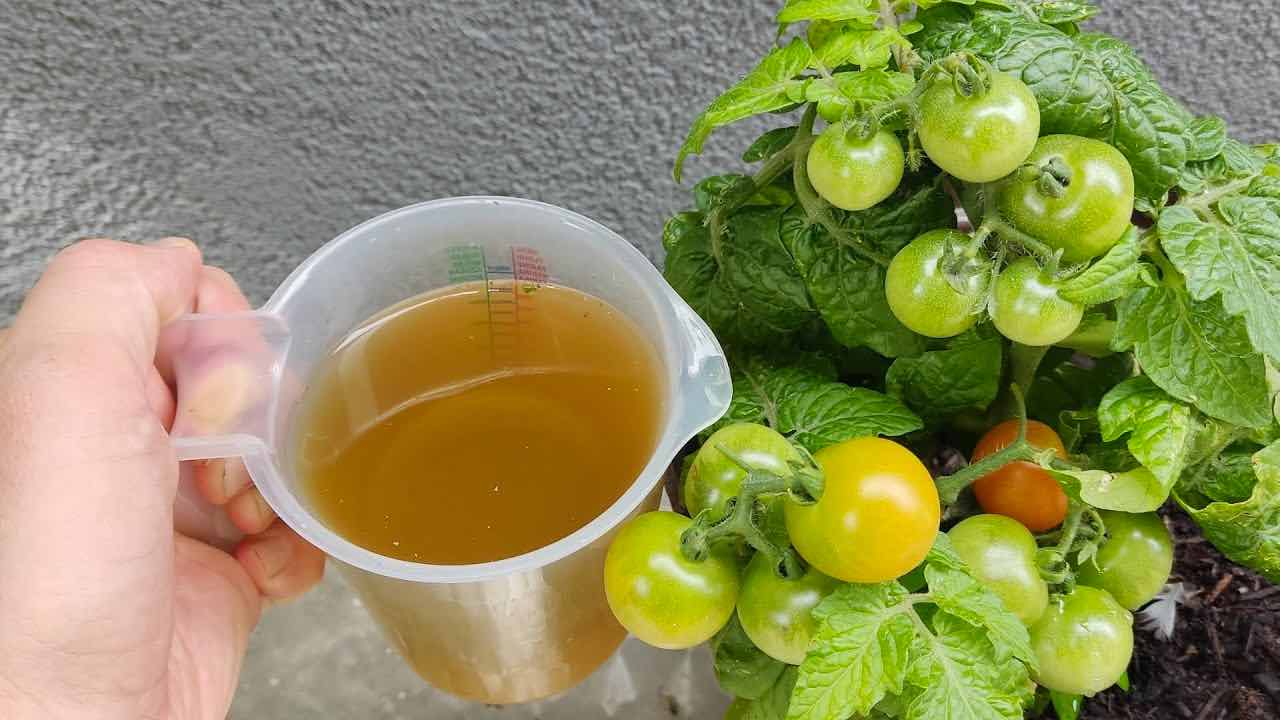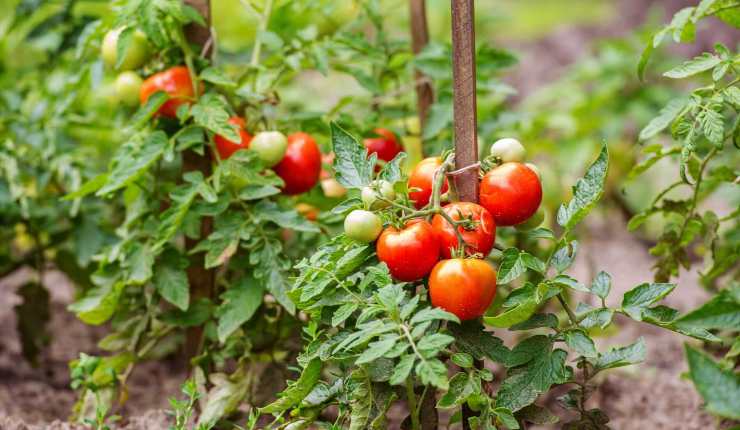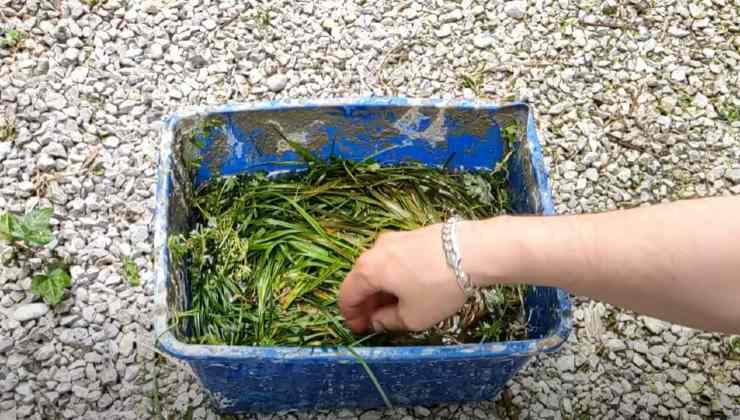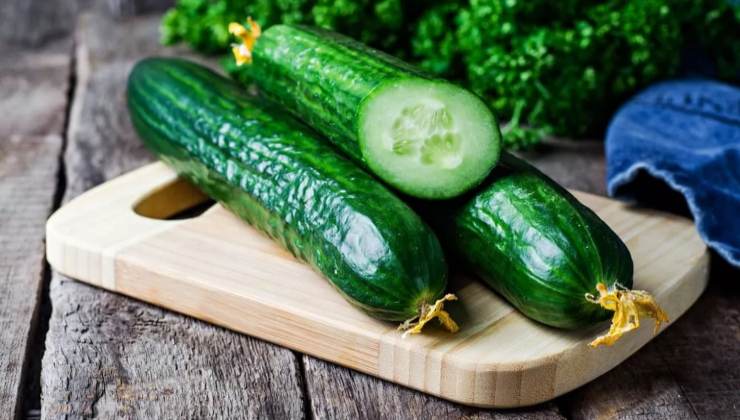
The most satisfying endeavors are those accomplished with our own hands. Instead of purchasing, it is recommended to craft your own best and affordable organic fertilizer. What steps can you follow to concoct an excellent fertilizer for thriving tomato and cucumber plants? Read on to find out.

If your love for gardening runs deep, you understand the significance of employing organic fertilizers to nurture robust and vibrant plants. Nevertheless, the realm of fertilizers is diverse, with some being prohibitively expensive or requiring extensive preparation time.
Fear not, for there exists a cost-effective and simple solution that you can concoct right at home, delivering exceptional results for your tomatoes and cucumbers! This article will guide you through the process of crafting an excellent yet inexpensive organic fertilizer, using minimal ingredients and without breaking the bank. Ready to get started?
What exactly constitutes organic fertilizer?
Organic fertilizer serves as a natural product designed to nourish plants and enhance soil quality. In contrast to chemical fertilizers, organic alternatives are devoid of harmful or toxic substances, ensuring a 100% environmentally friendly composition. The use of organic fertilizer presents numerous advantages compared to synthetic counterparts.
Primarily, it contributes to the enhancement of plant health by supplying a comprehensive array of essential nutrients like nitrogen, phosphorus, and potassium. This results in more robust and disease-resistant plant growth.
Additionally, organic fertilizer plays a crucial role in improving soil quality by fostering the activity of beneficial microorganisms within the soil. These organisms collaborate to break down plant materials, ultimately transforming them into nutrient-rich compost.

Ultimately, organic fertilizer contributes to a sustained enhancement of soil fertility by incorporating organic matter. This organic matter serves as a natural water reservoir within the soil, offering both moisture retention and structural support to plant roots over the long term.
The benefits of utilizing organic fertilizer
Organic fertilizer holds numerous advantages over synthetic chemical fertilizers. Firstly, its environmental sustainability stems from its natural origins, devoid of toxic substances that may harm the soil and plants.
Over the long term, organic fertilizer enhances soil structure, increasing the presence of organic matter to boost soil fertility. This, in turn, can aid in preventing desertification and decreasing the reliance on irrigation.
Another notable advantage of organic fertilizer is its positive impact on plant health, avoiding undesirable side effects commonly associated with chemicals. Optimal plant growth occurs when natural nutrients are gradually released from the soil, promoting a healthier and more sustainable development.

Ultimately, employing a natural fertilizer implies your contribution to establishing a well-balanced and thriving environment for all organisms engaged in cultivation, ranging from microflora to bees and birds. This fosters a positive food chain where every element collaborates harmoniously without external interference.
Create the most cost-effective organic fertilizer using just a bucket or barrel, along with cut grass and water.
The most economical and effective organic fertilizer can be easily concocted at home using just a few tools and ingredients. There’s no need to splurge on pre-made compost or other pricey products.
All you require is a plastic bucket or barrel, fresh cut grass, and water. Opting for a plastic container is crucial to prevent any reactive effects during the fermentation process, unlike metal containers.
To prepare, fill three-quarters of the bucket with cut grass, ensuring the vegetable mass is completely covered by adding water. To expedite fermentation, consider incorporating sugar, baking powder, and chopped bread crust. For an extra boost, a small amount of wood ash can be added to enhance its potency.

The fermentation process typically spans around two weeks, influenced by prevailing weather conditions—the higher the temperature, the quicker the completion. Once the mixture reaches readiness, it can be utilized by diluting it in water at a ratio of 1:10, effectively nourishing vegetable plants like tomatoes and cucumbers.
This method results in the formulation of a natural vegetable fertilizer, abundant in essential nutrients such as nitrogen, phosphorus, potassium, and vital micro-mineral elements crucial for plant growth.
Maximizing the Use of Organic Fertilizer: Helpful Tips
Certainly, here are some guidelines to optimize the utilization of organic fertilizer:
- Even Distribution: Ensure uniform application by spreading organic fertilizer evenly across the soil or plants you intend to fertilize. Avoid concentration in specific areas to promote balanced nourishment.
- Correct Dilution: When using liquid fertilizer, adhere to the product label instructions for proper dilution. This precaution prevents potential harm to plants due to excessive nutrient concentration.
- Moderate Doses: While organic fertilizer is a natural product, it’s crucial not to surpass recommended doses. Excessive nutrient levels can be detrimental to plants, emphasizing the importance of moderation.
- Timely Application: Choose the appropriate time for fertilizer application based on the plant type. Some plants require more nutrients during growth, while others benefit from increased nourishment during flowering.
- Proper Storage: Preserve the quality of organic fertilizer by storing it in a dry, cool location, shielded from direct sunlight and heat sources. This precaution helps prevent degradation over time.
Guidelines for Cultivating Tomatoes and Cucumbers
For a successful yield when cultivating tomatoes and cucumbers, it’s essential to adhere to certain guidelines. Primarily, select a sunny location where the plants can receive a minimum of 6 hours of direct sunlight each day.

Furthermore, it is essential to thoroughly prepare the soil before planting or transplanting seedlings. The soil should be enriched with vital nutrients like nitrogen, phosphorus, and potassium, achievable through the incorporation of organic compost or natural fertilizer.
To prevent water stress during plant growth, maintain a regular watering schedule, avoiding overhydration. For the prevention of fungal diseases such as gray mold in tomatoes, it is recommended to water exclusively at the plant’s base, avoiding leaf wetting.
Eliminating side shoots emerging from the armpits between the main branches and leaves is crucial. These shoots divert energy from the main plants and impede fruit development.
When harvesting tomatoes and cucumbers, it is advisable to use specialized scissors to prevent accidental damage. By following these straightforward measures, a bountiful harvest of fresh and flavorful vegetables can be achieved directly from your garden!
The most affordable organic fertilizer is the one crafted by our own hands.
In conclusion, the optimal and cost-effective organic fertilizer for tomatoes and cucumbers can be effortlessly created at home. There’s no need to invest in expensive commercial fertilizers; all you require is a bucket or barrel, along with cut grass and water. This approach not only proves economical but also aligns with ecological and sustainable practices. Such a fertilizer enhances plant strength and resilience to adverse weather conditions, eliminating the necessity for environmentally harmful chemicals.
Make informed choices for the well-being of your crops and the environment. By following our suggestion on crafting fermented vegetable fertilizer, you not only save money but also reap the rewards of healthier, more robust vegetables.